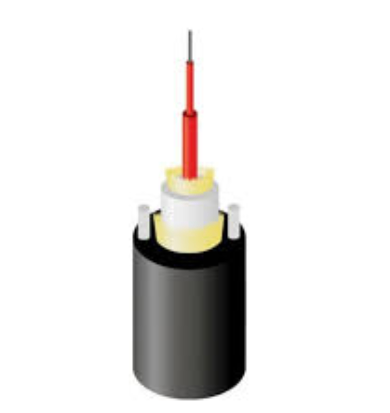Oufu Optical Fiber Cable Co., Ltd
Heimilisfang: Shenyang, Liaoning, Kína.
Tengiliður: Zhang stjóri
Sími: 400-964-1314
Farsíma: 86 1390405338
?
2025-09-10 0

Unlike multi-fiber cables, single-strand Fíbrjóta sjóntakaflas specialize in simple applications where a single transmission path is sufficient. Ideal for dedicated connections, backup links, or residential installations, they eliminate the complexity and cost of unnecessary additional fibers. According to market data, projects using single-strand cables can achieve up to 40% savings on material costs compared to oversized multi-fiber solutions.
Our team discovered during a 2023 surveillance project that using single-strand cables to connect remote IP cameras reduced installation time by 50% while significantly simplifying maintenance.
| Feature | Single-Strand Cable | Multi-Strand Cable (12 fibers) |
|---|---|---|
| Installation Complexity | Low | High |
| Material Cost | Economical | 3x to 5x Meira. expensive |
| Flexibility | Dedicated application | Multi-service |
| Maintenance | Simplified | Complex |
| Installation Time | Quick (30-60 min) | Long (2-4 hours) |
| Ideal Use Case | Point-to-point links, FTTH | Backbone networks, data centers |
Step 1: Determine Fiber Type
The choice between single-mode (OS2) and multi-mode (OM3/OM4) is crucial. For distances exceeding 550 meters or for future-proofing, single-mode fiber is essential. For short-distance applications (<400m), multi-mode offers excellent performance-to-price ratio.
Step 2: Select Appropriate Jacketing
For indoor installations, prioritize OFNR (riser) or OFNP (plenum) rated jackets. For outdoor deployments, choose UV-resistant and moisture-resistant polyethylene sheaths. ArMeira.d versions are essential for harsh environments.
Step 3: Verify Connector Compatibility
LC connectors have become the standard for their compactness. Ensure your end equipment supports the chosen connector type. Pre-terminated options can reduce installation time by up to 70%.
Step 4: Plan Your Connection Strategy
The simplicity of single-strand requires rigorous planning. Unlike multi-fiber cables, you won't have spare fibers in case of problems. Always plan a slightly oversized cable path to facilitate potential replacements.
Step 5: Calculate Total Cost of Ownership
While single-strand cables are economical, consider long-term costs. The absence of spare fibers means any failure will require complete reinstallation. Assess risk based on installation accessibility.
Www.adsscable.cn
Handling single-strand fiber requires special attention. Always maintain a minimum bend radius of at least 20 times the cable diameter. Use proper pulling techniques, applying tension to the strength members and never directly on the fiber.
⚠️ Important Warning: A single-strand Fíbrjóta sjóntakafla is Meira. vulnerable than multi-fiber cables. A single handling error can render the entire installation unusable. Always test the fiber before and after installation.
Testing is particularly critical for single-strand installations. Use an OTDR (Optical Time Domain Reflectometer) to verify fiber integrity and measure loss. Meticulously document results, including loss values for each connection. This documentation will be crucial for future troubleshooting.
☑️ Fiber type confirmed according to distance requirements
☑️ Appropriate jacketing for installation environment
☑️ Compatible connectors with existing equipment
☑️ Cable path inspected with bend radius compliance
☑️ Pulling method validated using strength members
☑️ Test equipment prepared for post-installation verification
☑️ Documentation ready for test result recording
Q1: What is the main advantage of a single-strand cable?
A1: The main advantage lies in its simplicity and reduced cost. Perfect for simple point-to-point applications, it eliminates waste of unused fibers and simplifies cable management.
Q2: Can a single-strand cable be used for bidirectional communication?
A2: No, a single fiber only allows unidirectional transmission. For bidirectional communication, you will need either two fibers (one for each direction) or specific couplers that split wavelengths.
Q3: What maximum distance can a single-strand fiber support?
A3: It depends on the fiber type. Single-mode fiber (OS2) can support distances exceeding 100 kilometers without signal regeneration, while multi-mode fiber (OM4) is limited to approximately 400 meters for 10G.
Q4: How to repair a damaged single-strand fiber?
A4: Repair typically requires fusion splicing. If damage is significant, complete segment replacement may be necessary. This is why critical installations often use multi-fiber cables for redundancy.
Q5: Is single-strand cable suitable for FTTH?
A5: Absolutely. Single-strand Fíbrjóta sjóntakafla is very commonly used in FTTH (Fiber to the Heimi) installations where a single fiber is sufficient to serve an end subscriber, especially with WDM technologies that allow multiplexing multiple signals on a single fiber.